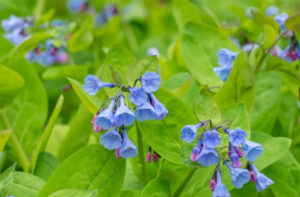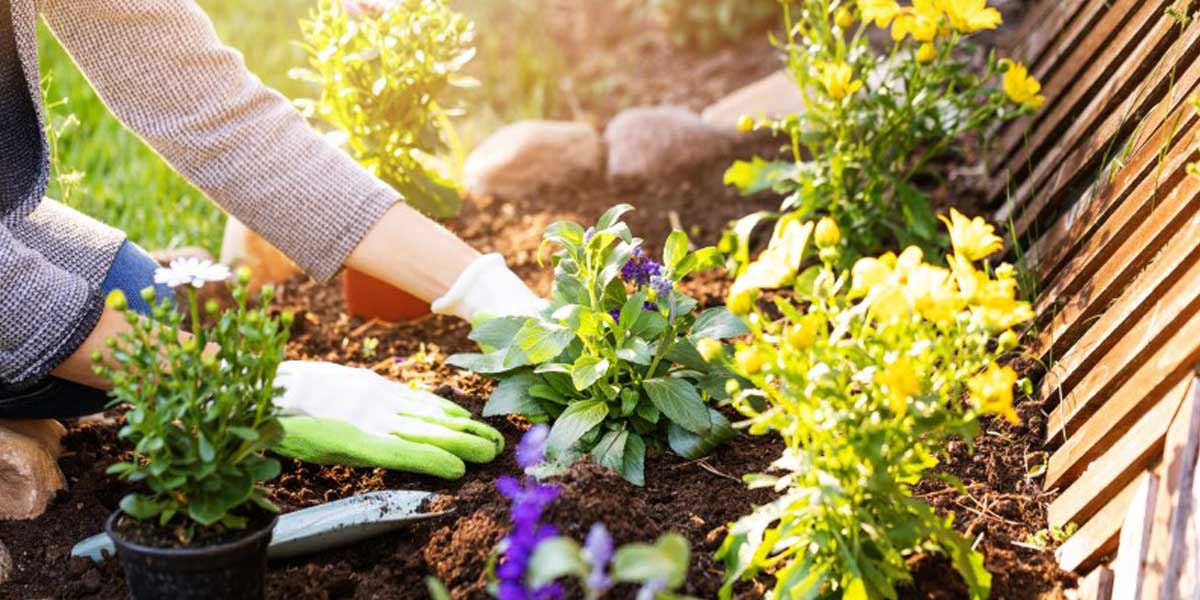Virginia is home to a variety of native plants that are well-suited to its diverse ecosystems, from the mountains to the coastal plains. Here are ten native plants that thrive in the state:
1. Virginia Bluebells (Mertensia virginica)
- Known for its vibrant, bell-shaped blue flowers, this early spring bloomer thrives in shady, moist areas like woodlands. Virginia bluebells attract pollinators and naturalize well in gardens.

Here are three notable features of Virginia Bluebells (Mertensia virginica), a beloved native wildflower in Virginia:
- Unique Flower Color Transition: Virginia Bluebells start as pink buds and gradually turn into a vivid blue as they open, creating a striking color display in spring. This color change is due to pH shifts within the plant as it matures.
- Shade-Loving Spring Bloomers: They thrive in shaded, moist woodland areas and bloom early in spring, providing essential nectar for pollinators such as bees and butterflies before many other plants have emerged.
- Ephemeral Growth Cycle: Virginia Bluebells are spring ephemerals, meaning they have a short growing season. After blooming, their foliage dies back as summer approaches, allowing other plants to take over the space in natural woodland settings.
2. Eastern Redbud (Cercis canadensis)
- A small tree with striking pinkish-purple blossoms in spring, the Eastern redbud is ideal for Virginia’s climate. It’s often found in woodlands and is a favorite for landscaping.
3. Black-Eyed Susan (Rudbeckia hirta)
- These bright yellow flowers with dark centers are hardy and resilient, making them perfect for Virginia’s summer heat. Black-eyed Susans are pollinator-friendly and add vibrant color to gardens.
4. Butterfly Milkweed (Asclepias tuberosa)
- This orange-flowered milkweed is an important native species for supporting monarch butterflies, as it provides a food source for larvae and nectar for adults. It’s drought-resistant and thrives in full sun.
5. Joe-Pye Weed (Eutrochium purpureum)
- A tall, perennial plant with clusters of pink flowers, Joe-Pye Weed is excellent for attracting butterflies. It grows well in moist soils and can handle partial shade, making it a good choice for rain gardens.
6. Wild Columbine (Aquilegia canadensis)
- This delicate flower, with red and yellow blooms, attracts hummingbirds and thrives in part-shade. Wild columbine is drought-tolerant and prefers rocky or woodland soils.
7. Sweetbay Magnolia (Magnolia virginiana)
- Known for its fragrant white flowers, Sweetbay Magnolia is often found in wetland areas and performs well in gardens with moist soil. Its glossy, evergreen leaves add year-round interest.
8. Cardinal Flower (Lobelia cardinalis)
- This bright red wildflower is a favorite of hummingbirds and grows well in Virginia’s wetland areas. Cardinal flowers prefer moist, shady environments and are perfect for naturalized garden areas.
9. Serviceberry (Amelanchier arborea)
- This small tree or shrub produces white spring flowers followed by edible berries. Serviceberries are a valuable food source for wildlife and are tolerant of a variety of soil conditions.
10. Christmas Fern (Polystichum acrostichoides)
- A common woodland fern, the Christmas fern stays green year-round and is ideal for shady areas. It’s low-maintenance, easy to grow, and provides ground cover in wooded garden areas.
These native plants not only add beauty to Virginia landscapes but also support local ecosystems by providing food and habitat for pollinators, birds, and other wildlife. For homeowners and landscapers in Virginia, incorporating these plants into gardens and green spaces helps preserve the state’s natural heritage.
Sources:
- Virginia Native Plant Society: VNPS
- Plant Virginia Natives: Plant Virginia Natives


